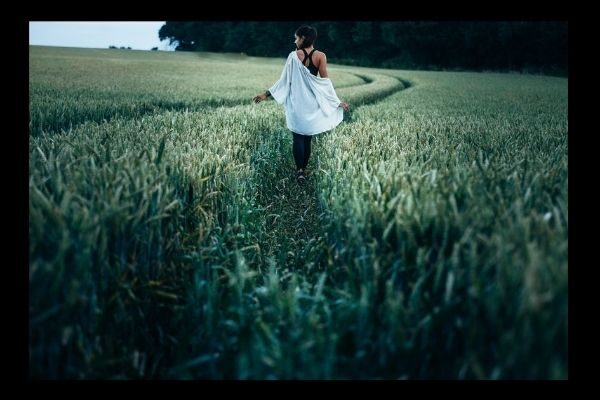
Here’s a selection taken from my journal, titled “Walking the Farm,” a sharing, so you know how at least one writer’s mind works.
I’m currently reading a book called Epitaph for a Peach, Four Seasons on my Family Farm, by David Mas Masumoto. He has shown me that it’s possible to write beautifully and informatively about farm life.
Inspired by his example, I ask you to join me as I walk our family farm.
Walking the Farm
My route varies only slightly when I take my daily walks. I leave the canopy of fruitless mulberries shading our back yard and head down the dirt road toward the free-stall barns that house our Holstein cows, ready to free my mind, listen, and explore.
Everywhere I look, there are changing shades of green. Each shade means something different to me. There’s the thriving green of mid-spring and the yellow green of a weak plant in bad soil. Nature has a way of putting a stop to foolishness. Young growth, vibrant green, light and shiny; old growth, dark and dull.
I survey the healthy corn crop, leaves, green and plump, shimmering against the setting sun. I close my eyes to better appreciate the smells and sounds. I smell moist earth. I sense moisture in the air. I hear my shoes crunching on gravel. I open my eyes, pan the fields, the darking sky, the pink-blue horizon.
Corn stalks full of leaves flutter in the wind. I imagine thousands of bird wings flapping, readying for flight. But the corn is earth bound, going nowhere. For now.
Our farm is only three miles from development. I measured it the other day on my drive to town. What is that in development years?
Our neighbor’s farm is gone. It disappeared in a flash. All landmarks gone. I feel dizzy disoriented. I wonder how my friends are doing, displaced farmers, moved into town, family divided.
I pull to a stop. New lights. Monster Caterpillars and Case tractors, backhoes, loaders, bulldozers. Armies of them, destroying, rebuilding. Houses pop up faster than corn crops. I sigh and close my mind. I have mixed feelings, you see.
Farming is hard. I’ve seen my husband age over the years in a way different than men in town. His body is trim, but his face shows the years spent in the sun, the hours of worry. But he would have it no other way. He couldn’t imagine doing anything else. “I need a reason to get up in the morning,” he says.
Vulnerable. That’s what farmers are, never in complete control, yet trying anyway. We’ve lost money, time, labor. We’ve lost our tempers. But so far, we haven’t lost hope.
Strength is not found in ridigity. We have learned to bend with the wind, let go, greet the challenges.
Hear the wind, see the wind, feel the wind, wet our fingers and taste the wind.
Thanks for visiting and sharing this writer’s mind.


Wonderful, Margaret. It made me think, not just of farmland disappearing in Canada where I live, but also of the lifelong farmers in China whose land I saw disappearing under rising water as a result of the Three Gorges Dam. They were given apartments in cities to replace their land. Are they now yellow-green in bad soil?
— K
Kay, Alberta, Canada
An Unfittie's Guide to Adventurous Travel
Hi Kay. I'm reading how there is a shortage of food to feed the world, yet instead of providing farmers with a decent price for the products they produce (and by decent I mean enough to not only pay for cost of production but also to make a decent living) our government sets a price so low it forces farmers to sell their land to developers or go bankrupt. Yes, yellow-green in bad soil is likely how most displaced farmers feel.